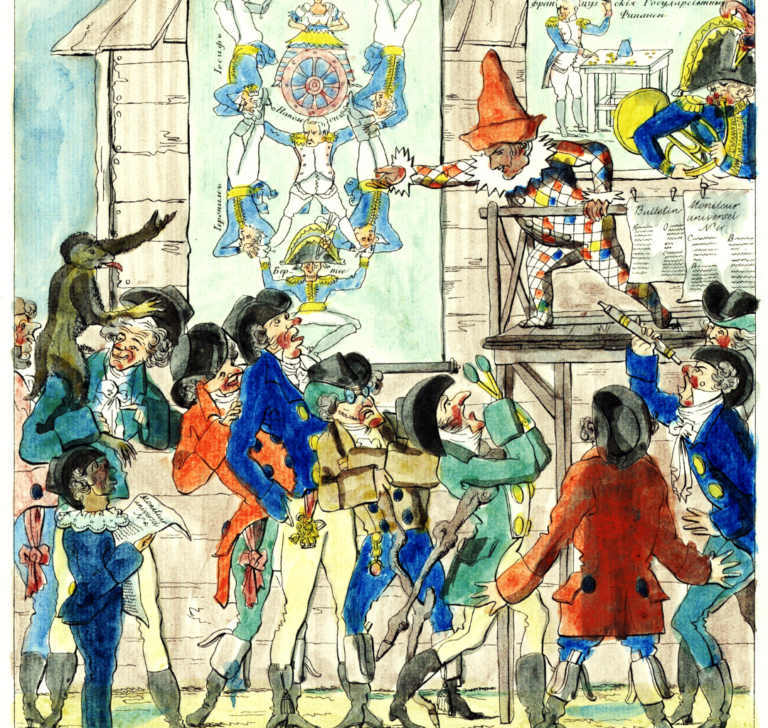The tradition dates back to Renaissance Europe and possibly to Roman times
April 1 marks April Fools’ Day for some, a date that invites pranks among friends, family, coworkers, and even entertainment industry personalities. The exact origin of this tradition is unknown to historians; however, it is known to date back to the European Renaissance and possibly Roman times.
Origins in ancient Rome, true or false?
Historians agree that despite numerous theories about the origin of April Fools’ Day, it is clearly a tradition with centuries of history. Among the theories, one that resonates is its origin in Rome. The Romans celebrated a festival called Hilaria in early April, featuring games and amusements, including masks and impersonations.
This joyful spring festival, honoring Cybele, the Phrygian goddess of nature and fertility, has been linked to the triviality of April Fools’ Day. The Romans also celebrated a festival exactly on April 1, called the Veneralia, dedicated to Venus Verticordia, an epithet of the goddess of love, which strengthens the theory.
In 1983, another story emerged linking April Fools’ Day with Emperor Constantine. According to the story published by the Associated Press, a group of jesters convinced the emperor to appoint one of them as king for a day. The story recounted that a jester named Kugel received the royal command on April 1 and declared the day a day of jokes and fun, thus linking it to April Fools’ Day.
However, the story was false. It was an April Fools’ Day prank written by Boston University professor Joseph Boskin to deceive Associated Press reporter Fred Bayles.

Origins theories in the Middle Ages
In early French writings dating to the European Middle Ages, a prank-playing pastime called “poisson d’avril” or “April’s fish” is recounted. The prank involved sticking paper fish on the backs of unsuspecting friends and family. Once the fish was found, the prankster would shout “poisson d’avril!”
The first known reference to April Fools’ Day is found in a poem by Flemish comedian Eduard De Dene, published in 1561, where a servant is sent on absurd errands on April 1, realizing they are “fool’s errands.” This practice of sending people on senseless tasks remained a popular prank throughout the centuries. A century later, antiquarian John Aubrey named it “April Fools’ Day,” noting its prevalence throughout Europe.

April Fools’ Day in modern times
A new tradition involves businesses and media outlets creating extravagant stories, such as the BBC in the 1950s with the spaghetti harvest story. Notable examples from brands include Google in 2015 displaying mirrored search results, Duolingo announcing a “speak emoji” course in 2017, and 7-Eleven introducing its “tiny gulp” in 2022.
In France and Italy, the tradition of “April’s fish” remains alive, with paper fish cutouts stuck on unsuspecting people’s backs and bakeries offering fish-shaped treats. Meanwhile, in Scotland, two days are dedicated to pranks: “Huntigowk” on April 1 and “Tail Day” on April 2, where tails or “kick me” signs are secretly hung on unsuspecting targets’ backs. Additionally, in Greece, playing pranks on April 1 is believed to bring good luck and a prosperous year.

The story of the first car race in Paris: a historic hit in 1894
Paris stands not only as a cultural and artistic epicenter but also as a pioneer in car racing In the history of automotive racing, Paris

Top states for driving in the United States in 2024
A WalletHub study compared all 50 states to determine the best driving conditions Road safety and quality are central concerns for drivers. And while the

Briefs: marijuana reclassification, vehicle fees, and climate grants
The trucking industry goes through new legislation, taxes and subsidies Questions about the proposed reclassification of marijuana The Owner-Operator Independent Drivers Association (OOIDA) supports the

Impact of traffic pollution: study reveals increase in blood pressure
A study from the University of Washington in Seattle reveals that the main cause of significant increases in blood pressure might be traffic-related gasses A

The benefits and careers of a Commercial Driver’s License
Having a CDL opens multiple doors within the trucking and transportation industry Having a Commercial Driver’s License (CDL) opens multiple doors within the trucking industry,

Sharing the road with a truck: steps to ensure your safety
Caution around blind spots and anticipating truck maneuvers are essential to ensuring everyone’s safety Truck drivers face significant challenges on the road due to their
